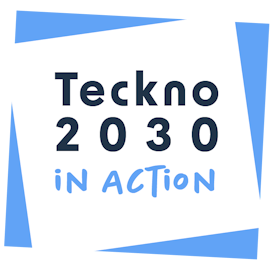Caring Technology guide

Technology is increasingly used in healthcare services. However, current technology support in healthcare is often focused on improving the efficiency of care delivery in view of pressing issues such as workforce shortages. A shift from 'smart' to ‘caring’ technologies, which puts the patient’s care needs at the forefront, is needed. With this webapplication, we want to help technology developers and innovation managers in discovering, exploring, or implementing caring technology innovations in accordance with the 8 guiding principles for caring technology (8CTP). These 8 principles are divided into 24 objectives, with 3 objectives per principle, which are further explained in the application.



Why?
Finding ways to reconcile the advantages offered by technology with the care needs of users and patients is challenging for both tech developers and healthcare organisations. A lot of different challenges need to be addressed, including issues of digital literacy, patient empowerment, data management, interoperability, etc. The 8CTP web application helps you to clarify and address these challenges. It reduces complexity by providing practical examples and tools that can help you to implement technological innovations in a responsible way.

How does the tool work?
The 8CTP web application offers step-by-step guidance tailored to the innovation needs of your organisation.
- Familiarize yourself with the 8 CTP.
-
Create an account:
Sign up by clicking on this link. -
Create a project for each technology you want to develop, evaluate, or implement.
- Enter details about yourself (role, organisation) and the technology.
- Choose your project phase: ideation, implementation, or evaluation.
- Determine when to address each of the 24 objectives during the development and implementation process. To help structure this, you can align your objectives with the four phases of the Double Diamond model: Discover, Define, Develop, and Deliver. By carefully aligning your objectives with these phases, you ensure they correspond to the logical sequence of the development process:
- Discover: Explore and understand the problem and the users' needs. This is the phase for gathering and analyzing information. For example, focus on objectives aimed at analyzing the needs of your target audience during this stage.
- Define: Bring clarity by defining the problem clearly and setting goals. Objectives related to specific functionalities of your technology fit well in this phase.
- Develop: Experiment and develop possible solutions. Use this phase to design prototypes or pilots and collect feedback. Here, you should focus on objectives that take testing considerations into account.
- Deliver: Implement the chosen solution and evaluate the results. Work on objectives that are important for the final implementation and evaluation of your technology.
- Assess the technology:
For each of the 24 objectives, rate how well the technology aligns with the that objective, choosing between 4 levels. Practical examples are provided for each level to guide your choice. - Track your progress:
Review how your technology scores on each objective and identify areas that need improvement. - Access resources:
Explore tips, tools, and organisations that can help you properly implement each objective. - Set actions:
Define steps to improve alignment with the objectives, assign responsibilities within your team, and set deadlines for completion.
Partners

